The manufacturing time for the individual active prosthesis CYBI and the bioelectric one-arm prosthesis INDY is approximately one month. The manufacturing time for the bioelectric multi-joint prosthesis MANIFESTO starts at one and a half months.
- What is a cosmetic prosthesis?
- Origin and development of prosthetics
- Choose modern traction and bionic arm prostheses
- Relevant organizations in the Moscow region are in contact
- We thank you for your trust
- Indications and limitations for endoprosthetics
- Surgical technique
- The essence of nail prosthesis treatment
- For the following treatments
- Who is looking for help?
- Treatment
- Indications for surgery
- surgery
- postoperative period
- rehabilitation
- Preparations for the operation
- Prosthetic treatment methods
- Why do I need a toe prosthesis?
- Prosthetic limb
- Where can you buy prosthetic hands?
- What does this online shop offer?
- Third step: The bionic eye – reality or fiction?
- How can we stop hackers from breaking into our brains if we are cyborgs?
- Conclusions
What is a cosmetic prosthesis?
Your doctor will insist on amputating an arm or leg if all treatment methods have failed. This is a painful decision not only for the patient but also for the doctor. The fight to save the leg or arm continues until the last moment. Modern medicine can solve extremely difficult problems by bringing people out of the underworld, but sometimes it is powerless. Often people lose a limb due to an accident (car accident, work accident, injury, etc.). They fall into depression because they are aware of hopelessness.
However, the hope of regaining mobility should not be given up. If you don't want to accept your helplessness, you can find a way back to a normal life, and an orthopedic technician can help. Modern prostheses are multifunctional and aesthetic. A cosmetic prosthesis conceals a defect while a complex mechanism restores mobility.
Origin and development of prosthetics
Prosthetics has its roots in ancient Egypt. The wooden prosthesis is well preserved in the mummies of the Old Kingdom. In the Middle Ages, constant warfare deprived ordinary soldiers and generals of their limbs. In the era of jousting, metal devices of intimidating appearance were used to partially restore motor functions. The first prosthetics were feared by those around them, but for people without an arm or leg they were the only way to survive in a world where the disabled had no place in society.
Scientists from around the world worked on the appearance and functionality of prostheses. The products became more modern, more comfortable and had new functions. Over the last century, prostheses have become an accessible technical means of rehabilitation for people who no longer have the use of their own arms and legs.
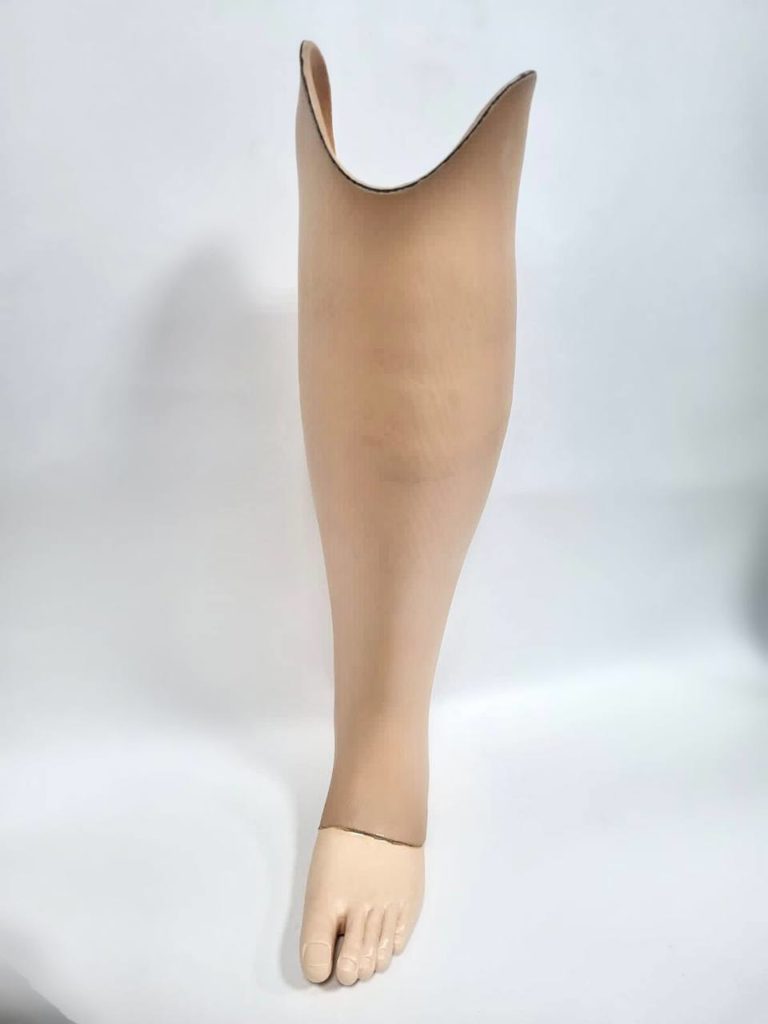
There are several types of modern prostheses:
- Functional. Functional prostheses fulfill the function of the lost limb by partially or completely restoring the person's mobility. The functionality depends on the type of construction chosen. There are mechanical and electronic models. The appearance of the functional prosthesis is secondary;
- Cosmetic prostheses. The aesthetic function of the prosthesis. With a cosmetic leg prosthesis you can walk but not run. A cosmetic prosthetic arm lets you hold a spoon, but it won't help you tie your shoelaces. It is a cover that replicates the natural shape and color of the limb and visually conceals the disability;
- Functional and cosmetic. Innovative solutions that address all human needs. The complex mechanism is covered by a shell identical to natural human skin. Scientists all over the world are working on the development of modern prostheses.
Limbs are prosthetics with different types of amputation:
Choose modern traction and bionic arm prostheses
There are different types of upper limb prostheses: bionic prostheses, traction prostheses, cosmetic prostheses and working prostheses. The artificial arm is available in different versions depending on the level of amputation: hand prostheses, forearm prostheses or shoulder prostheses. When looking for the right prosthesis, it is advisable to seek the help of specialists who can advise on the best solution for your case. Different prostheses have different advantages and disadvantages. Contact us, we will be happy to advise you.
Our company has been researching and developing state-of-the-art robotic arm prostheses since 2014. Motorika produces traction and bionic hand and forearm prostheses with additional functions, available throughout Russia.
You can get a prosthesis with an integrated smartwatch and contactless payment. Users of our prostheses can interact with smartphone screens via an integrated touchscreen function.
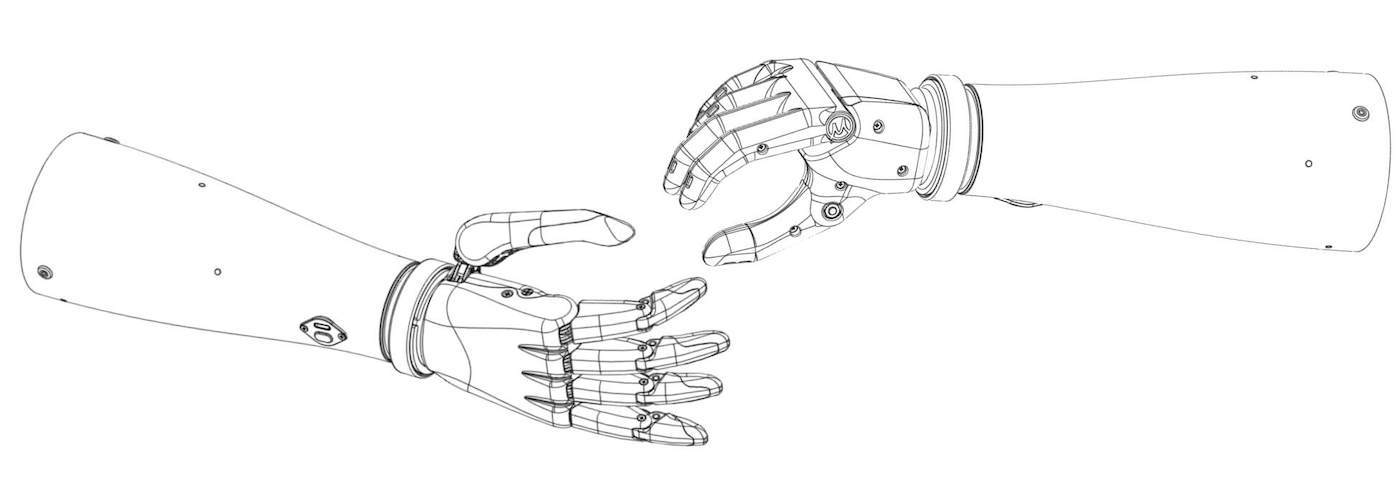
Bionic arm prostheses and active arm prostheses for the most demanding users
Relevant organizations in the Moscow region are in contact
95 % of our users receive their prosthesis free of charge from the Social Security Fund under compensation or a government contract. We help complete the formalities and quickly resolve problems when they arise.
We thank you for your trust
Our specialists will accompany you every step of the way: from paperwork to prosthetics to rehabilitation.
Our office and production site in Moscow
г. Moscow, Skolkovo Innovation Center area
42 Bolshoi Bulvar St., bld. 1, Skolkovo Innovation Center, Moscow. 1
Indications and limitations for endoprosthetics
- Presence of inflammatory processes in the body;
- infectious diseases;
- Osteoporosis;
- pseudoarthritis;
- trophic changes;
- complete destruction.
Preparation for surgery can be divided into two phases:
The artificial joint is selected individually, taking into account the patient's physiological characteristics, his general health, his age and the stage of his disease.
A list of preoperative examinations is drawn up:
In addition, the patient is consulted by an anesthesiologist, a cardiologist and a general practitioner. The traumatologist explains in detail the treatment tactics and the properties of the chosen implant.
Surgical technique
To gain access to the affected joint, the surgeon makes an incision in the skin and soft tissue protrusion. All manipulations are carried out through this incision. First, a tissue revision is carried out and the current condition of the organ is assessed. The doctor then removes all diseased bone fragments and carefully grinds the edges.
The next step is to insert the prosthesis directly. Depending on the extent of the lesions, joint replacement can be total or partial. Once the main manipulation is completed, sutures, drains, splints and an aseptic dressing are applied.
The essence of nail prosthesis treatment
Prosthetic treatment of the toenail in the podiatry practice – It is the partial restoration of a nail (missing corners or angles), a nail fragment, the restoration of a nail after nail deformation or the reconstruction of an injured nail.
What is the difference between prosthetics and nail extensions in the salon? Prosthetics uses a special nail reconstruction material SPECIFIC to the feet. Its special features include the mandatory presence of the element Ag, an antiseptic that prevents the development of infections under the material after the prosthesis. Another important feature is that the material is not super stiff and static like gel. The material should be slightly softer on the nails than on the hands to avoid accidental injuries.
We often see this unsightly picture - when a girl comes in for correction with a 'prosthetic' big toe. We remove the material, and underneath the material we see black and green….How did this picture come about? The answer is that either the material is unsuitable for the prosthesis, or there has been an early stage of fungus that has begun to 'thrive' and a mycologist is now required to treat the fungus. This does not take into account the fact that the feet sweat, get wet and the fungus expressly develops in a 'tight' condition.
There are contraindications to nail prostheses. It is an open wound surface, nail fungus, allergic reactions to the material.
Take care of your health and entrust it only to professionals.
Indication for nail replacementIn addition to the need to correct an ingrown nail or improve the appearance of the hands or feet, there are also negative factors such as
- traumatic injuries;
- the need to correct postoperative defects and sequelae of onychomycosis;
- Control of congenital anomalies such as nail growth disorders;
- Onychorexia – a condition characterized by spontaneous splitting of the nail plate.
For the following treatments
Nail prosthetics Nail prosthetics serves not only aesthetic purposes, but also solves a number of medical problems. The materials used must have certain properties. Products used in beauty salons for nail extensions are not suitable for the same treatment on the feet due to their high hardness and the lack of an antifungal component. When using them, injury to the natural nail plate due to the strain on the foot cannot be ruled out. For this reason, the materials used for nail prostheses contain ingredients that increase their strength and flexibility and also have an antifungal effect.
There is also a difference in the treatment itself. The podiatrist's job is to completely rule out infection. Since brushes cannot be sterilized, The technician is very limited in his choice of tools. He can only do his work with a metal spatula. Achieving an aesthetic version turns out to be more difficult, so the professional skills and practical experience of the podiatrist are extremely important.
Who is looking for help?
Although some people require major finger replacement after an injury, the procedure is more commonly performed on people dealing with the effects of rheumatoid arthritis or osteoarthritissuch as B. the hallux rigicus, a bone spur on the joints.
Your Israeli orthopedist will ask you questions about your general health, as well as the pain in your fingers and toes and its impact on your ability to function.
The doctor will also conduct a physical examination to assess:
To better understand the damage, the surgeon will take an x-ray of your foot.
Contact the Israel Medical Association to find out the exact cost of treating your foot at various hospitals in Israel within 2 hours.
Treatment
Before recommending replacement of the big toe, the orthopedist may suggest the following other treatment methods:
If non-surgical treatments do not work or no longer relieve pain, Toe replacement in Israel may be a good option for you..
Indications for surgery
If you are older or have limited use of your feet and suffer from rheumatoid arthritis, osteoarthritis or a stiff big toe and the pain in your feet affects your daily life, including leisure time, you could consider having a toe replacement in an Israeli clinic question come.

Head of the Spinal Surgery Department at Assuta Clinic
surgery
The operation is only performed in major Israeli hospitals. During the operation, the big toe is replaced under general anesthesia. The orthopedist makes an incision on the upper part of the big toe and removes the damaged parts of the joint. Then be with special instruments prepares the bone surfaces for the artificial joint parts and attaches them to the bone on both sides of the joint. Once the artificial joint is properly fixed, the surgeon closes the incision.

postoperative period
You will remain in the recovery room where the patient is monitored. When you wake up, your leg will be bandaged. It will later be placed in a plaster cast. You will remain in the hospital until you have learned to walk safely, possibly using a walker, cane, or crutches. If possible, you should elevate your foot to reduce swelling and improve wound healing.
rehabilitation
After the stitches are removed, your Israeli orthopedic surgeon will probably ask you to do simple weight-bearing exercises, such as: B. Start walking in hard-soled shoes to ensure good healing. It can take up to eight weeks until the toe can be put under regular and full weight. Some patients may work with a physical therapist after thumb surgery to improve range of motion and aid recovery.
Preparations for the operation
Before a prosthesis can be inserted, some simple preparations are required. This is done as follows
The podiatrist removes the damaged nail using special tools. The next step is
The next step is grinding and manipulating the shaft.
If vascular damage is discovered during the manipulation, the patient must
The patient returns to the clinic after the wound has healed. This is an important point since prosthetic treatment
Prosthetic treatment is only carried out after the wound has completely healed.
The prepared area is disinfected before treatment,
the prepared area is disinfected and dried.
Prosthetic treatment methods
Methods of nail plate replacement:
- GEHWOL ready-made compound – with this technique, the materials are applied one after the other until the desired thickness of the prosthesis;
- Unguisan two-component polymer – a powder and a liquid hardener are used. The resulting polymer is difficult to distinguish from the natural nail;
- GEHWOL light-curing gel – this is a thin but strong coating that can be fixed with UV light. The mass contains antibacterial substances that protect the plate from infections;
- Arcade' method - here acrylic powder containing silver ions is applied to the prepared nail. This method very rarely leads to undesirable reactions and is suitable for correcting the nail plate in patients of all ages.
The doctor then polishes the surface, regardless of the method, to give it the desired shape and smoothness.
The doctor then polishes the surface to the desired shape and smoothness, regardless of the method.
Why do I need a toe prosthesis?
Toe prostheses not only provide an aesthetic appearance, but also improve the function of the foot, which is impaired after an amputation. Interestingly, prosthetic toes were already used in ancient Egypt. When the mummy was unearthed, the prosthetic thumb on its foot was clearly visible. At that time it was made of wood and was attached to the base with leather strips. Today, technology has come a long way and people can use modern prostheses that are easy to use.
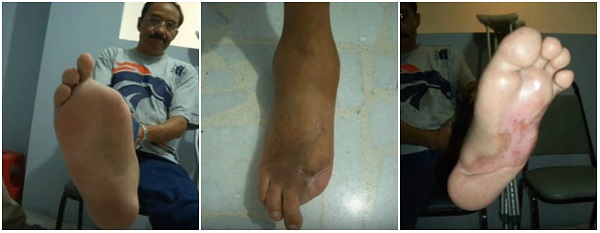
Prostheses can help with many problems that arise after an amputation, such as: B:
- Improving balance when moving the body.
- Elimination of psychological discomfort, especially in summer when wearing open shoes.
- Ensuring the normal fit of shoes.
- Avoiding deformation of the remaining toe.
- Protection of the remaining limb that is sensitive to external influences.
It is a mistake to think that a prosthesis for lost toes is not necessary - it is not just a small defect, but a serious problem. So if the big toe is missing, there are problems walking because there is no support. This is particularly noticeable when you try to speed up your running pace. The big toe provides the necessary push from the surface.
Discomfort also occurs when the second toe is amputated. In this case, the big toe gradually deviates towards the remaining toe, resulting in deformity of the foot.
Prosthetic limb
Currently, various manufacturers offer prostheses made of high-quality silicone that do not cause allergic reactions and look aesthetically pleasing. A person with such a prosthesis does not feel incomplete.
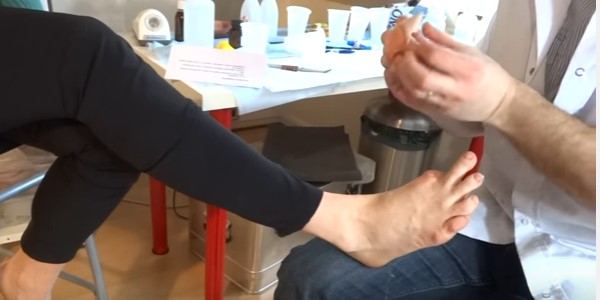
There are different types of prostheses that vary in price and function. Options include:
- Working prostheses are simple products that replicate the shape of the foot or fingers. They are often used as a method of acclimating a residual limb to a permanent prosthesis. This type of prosthesis is worn for 2-6 months before a permanent prosthesis is fitted.
- Active/passive functional – this product has a more complex structure. They are often used for permanent finger prostheses. They have joint modules and regulate movement using micromotors and rods. The sensors in them react to micro-impulses that occur when you try to bend your finger.
- Cosmetic functional prostheses are the most modern and complex type of prostheses. Sales of vehicles for export, purchase of vehicles without technical control anywhere in France. Not only do they have a special module that allows finger movement, but they are also covered with a synthetic material that looks very similar to real skin. Such prostheses are very advanced. They can be used constantly and do not need to be removed for showering or swimming.

Where can you buy prosthetic hands?
Prosthetic fingers can be purchased on the Prosthetic/Orthopedic Products website. This online store offers a wide range of prosthetic and orthopedic products, an extensive range of various prosthetic accessories and consumables purchased from reliable manufacturers. In addition, highly qualified specialist advice is available, which can be confidently called a guarantee of the quality of services and time savings for customers.
Every product is quality tested and guaranteed to be reliable.
What does this online shop offer?
This shop offers both men's and women's products to its customers, including custom-made products. They are all characterized by good aesthetics. Their appearance and feel are very similar to real fingers. Every model offered is available in literally every version.
The shop offers cosmetic products made from both silicone and plastisol. These materials are completely safe and cannot cause any allergic reactions or irritation. They can also be used to make artificial toes.
Third step: The bionic eye – reality or fiction?
We associate many things with the word 'bionic eye': some think of Terminator, others think of the DC universe and comics, others think of high-tech prostheses and others have no associations at all. What is the bionic eye really?
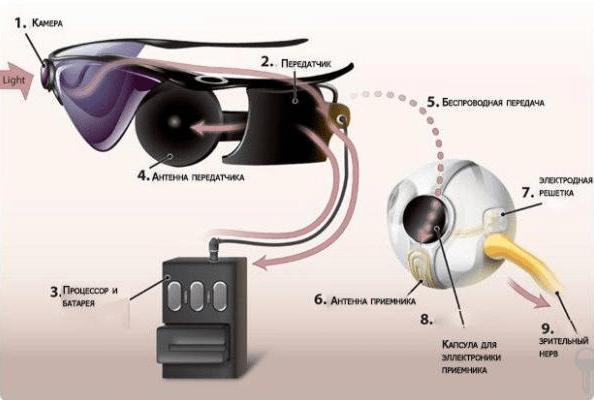
A miniature camera attached to the glasses takes pictures. These images are then evaluated by a portable processor and converted into an electronic signal. The signal pulses are transmitted wirelessly to the implant via high-frequency coils. The resulting signal is transmitted to an electrode array that controls the neural elements of the retina (i.e. bipolar and ganglion cells) [6-8]. This is where signal processing begins, which is further integrated as it travels through the optic nerve to the visual cortex for the final perception of the visual image. A frequently used technique is electrical stimulation of the visual pathways using a visual prosthesis or a 'bionic eye'. The essence of stimulation is to induce neuronal activity in an area that remains functional regardless of the underlying cause of blindness.
How can we stop hackers from breaking into our brains if we are cyborgs?
The interaction between brain and computer is evolving rapidly. And these technologies could eventually turn people into real cyborgs. But before that happens, we need to ensure that neural devices are secure and protected from the threat of hackers.
With the dream of a bright cybernetic future in mind, researchers in the journal Science their article Help, hope and hype: Ethical dimensions of neuroprosthetics [9]. The authors' mission is not only to describe the possibilities that the field of neurotechnology will open up, but also to alert the public to the dangers that may await us as we move into this ultra-high-tech future.
Conclusions
Neuroprosthetics is a global topic of the future. Technology becomes a reality through the hard work of scientists. Perhaps in the future scientists will develop cognitive implants that make us smarter and stronger. Are we becoming a cybernetic society [10]?
- Sviti KA (2001). Walk like an amputee Egyptian. Discover.;
- Yawn R, Hunter JB, Sweeney AD, Bennett ML (2015). The cochlear implant: a biomechanical prosthesis for hearing loss. F1000Prime Rep.7, 45;
- Cyborgs Today: Neurocomputer technology is becoming an integral part of our lives;
- Roberta Kwok. (2013). Neuroprosthetics: once again with feeling. Nature. 497, 176-178;
- Hirsch A. (2016). Johns Hopkins students design prosthetics that fit high heels. Johns.Hopkins University.;
- Bionic Eye. (2014). The Scientist.;
- Merabet LB. (2011). Building the Bionic Eye: New Realities and Possibilities. Prog. Brain Res.192, 3-15;
- Philip M. Lewis, Lauren N. Ayton, Robyn H. Guymer, Arthur J. Lowery, Peter J. Blamey, et. al. (2016). Advances in implantable bionic devices for blindness: a review. ANZ Journal of Surgery. 86, 654-659;
- Jens Clausen, Eberhard Fetz, John Donoghue, Junichi Ushiba, Ulrike Spörhase, et. al. (2017). Help, hope and hype: Ethical dimensions of neuroprosthetics. Science.. 356, 1338-1339;
- Cyborgs among us.
- prosthetic finger.
- Modern leg prostheses.
- Leg prosthesis below the knee.
- Limb prostheses are.
- prosthetic leg.
- prosthetic legs.
- Manufacture of lower limb prostheses.
- prosthetic leg where.
